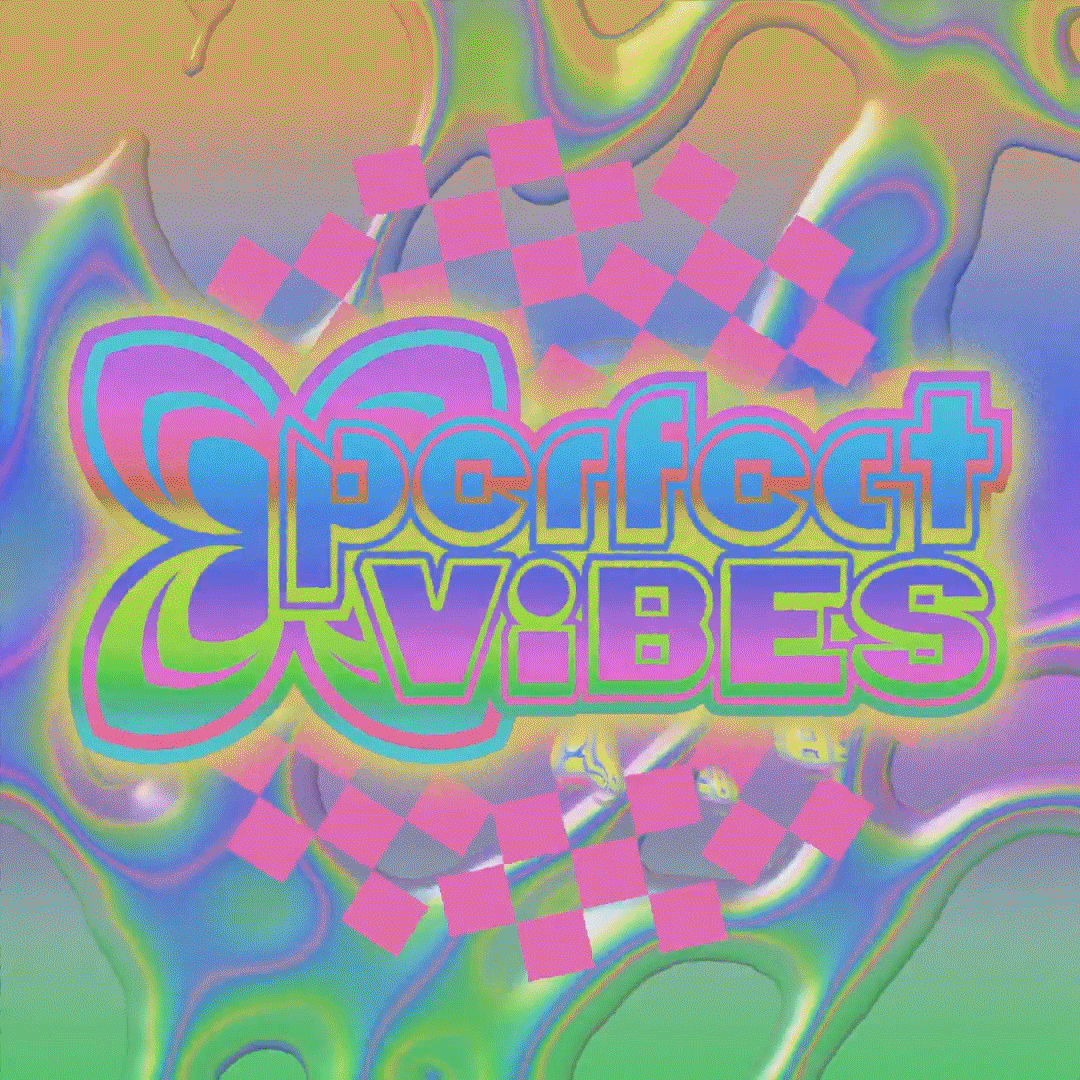
An exploration of countercultural and utopian aesthetics resurging as algorithmic -cores, -waves, and -isms within the internet nostalgia cycle.






Why are retro, quirky, and futuristic visual styles from past decades coming back as irresistible “vibes”? Why are they so captivating to new audiences—and algorithms?
A possible explanation would be for its nostalgic value: “vibes” are familiar comforts that could help us deal with the present. Soothing, appeasing, and comforting, vibe-emitting signifiers (music, fashion, graphics, spaces, and video) transport us into realms of a more idyllic, or idealized time.
With one click of a button, users can find themselves in the psychedelic candylands of the 1960s, the transcendental mindspaces of the 1970s, the techno utopias of y2k, or the post-recession euphoria of the late 2000s.
Vibes tune out the noise of global-scale information overload—with the same algorithms that deliver the latter, of course.
With the help of the internet, the nostalgia cycle has accelerated at an unprecedented level: trends combine, fragment, and negate one another like never before. “We live by the revival,” says Marshall McLuhan, “it tells us who we are—or were.” Depending on the Internet spaces one inhabits, communities may appear more consolidated (like broadcast television) or fragmented into micro-communitiess. However, one thing is consistent: the past becomes a hazy image, despite how fast information travels—and precisely because of it.
Let’s take a look at some examples from an “aesthetic” perspective: new psychedelia and neo-new age, two “aesthetic” revivals from the late 2010s, inundate the 1960s hippie with Eastern philosophical beliefs, pop psychology, astrology, and even stoicism. Overall, it compacts these subjectivities into generalized signifiers of growth, progress, and self-actualization. Neo-y2k, the revival of a 1990s futuristic vision, eventually became a trend that is 20th-century futurist, 1970s modern, and 1990s-aughts experimental. It is sleek but gaudy, bold but dreamy, traveling backwards and forwards at the same time.
Counterculture? Subculture? Welcome to the age of microcultures.
This is the nature of trends in the digital age: We can see the same aesthetic influences in yoga studios and streetwear, or in Silicon Valley offices and hip-hop albums. Our immediate environment had expanded to the global village, where daydreams of a “nostalgic future” materialize from aesthetic paradoxes.
It is a process of becoming perfectly vibey.

“Vibes-based” media are products of our cultural climate.
We have established two things about the 2020s: one, that it is an era of personalized consumption; and two, that it has reoriented people’s perceptions of time and space. But these are circumstances that had already begun taking shape at the turn of the century. The “post-recession” era of the 2000s, specifically, saw an uptick in widespread internet access and social media use, displacing traditional avenues of “monoculture” such as television and localized communities. At the same time, direct-to-consumer (DTC) brands and startups rose to fulfill more unique customer needs and wants as compared to conventional retail marketplaces.
This present condition is marked by the lack of physical third spaces, which results in the channeling of leisure time into digital media consumption. Eyes dart from news feeds to shopping catalogs to chat messages, and back. Users experience many presents at once. The collective experience of our time has become media consumption, often constrained within the four corners of a screen.
If we append this information to our knowledge of nostalgia cycles, we now have better insight on why in-groups further split into micro niche communities, and design trends as -cores, -waves, and -isms, and how these online activities can carry over into real life.
What might we do about it?
To put it simply: we can all benefit from a vibe check.
Creatives, as media creators or producer/consumer intermediaries, need to practice responsibility and thoughtfulness in appropriating “aesthetics” for their projects. They must know the messages carried by these cultural products, and assess whether these can enrich their audiences or simply provide a quick dopamine rush.
In a sense, a vibes-based process can have a lower barrier to entry for both producers and consumers. Trends are most often dictated by algorithms that prime audiences with viral and personalized content, and then point them tobrands that are ready to answer their whims. In turn, these types of highly personalized consumption patterns give rise to specific vibe-based “aesthetic” signifiers (Hot pink? That’s Barbiecore. Heavy text? Brutalist). With a stroke of luck, these vibe-y cultural products might even branch out into mass consumption. At the very least, the individual curation of a perfect vibe can earn a person (or a brand) the validation of a micro-community...
...until the next trend comes around.

The vibes-based creative process is transient and spontaneous.
It requires a malleable persona to ensure one is ahead of the curve, and agile goals that easily pivot to the next big trend—or the next big revival. As long as there are young adults coming to age and longing for familiarity, nostalgia will also keep influencing this trend cycle.
On the other hand, there is another way to harness global media trends: Instead of chasing the vibes, a designer may reflect on their own practice—and ideally, chat with fellow local creators—to find unique ways of repurposing these signifiers.
For instance, some designers repurpose “new” visual techniques, such as pixel art, to promote older design industries like textile-making and transform bits and bytes into a shared visual language. Some creatives curate, document, and find inspiration from local ephemera to imbue their projects with a rich cultural background. Others also study local letter- and image-making techniques to create unique design styles that reimagine foreign standards of visual communication.
Globalized trends may be an integral part of content creation, but aesthetics need not be chased to its own ends. We can choose to pop the filter bubble and find ways to cultivate a resonating design practice for our communities. We can be the ones transforming microcultures into horticulture.
What do we want our young audiences to be nostalgic for?

PERFECT VIBES | AKVDZN 2023